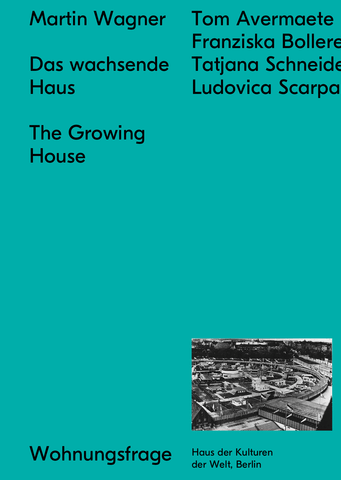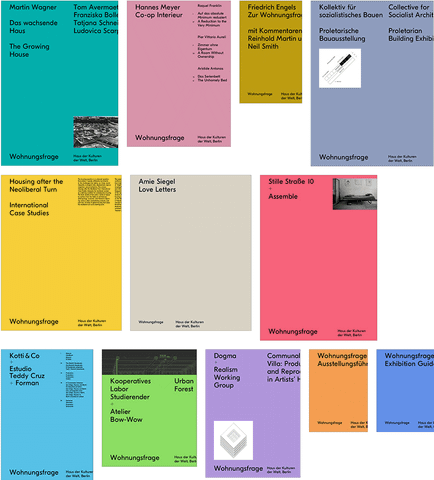Martin Wagner: The Growing House

Text: Martin Wagner
Commentary from Tom Avermaete, Franziska Bollerey, Ludovica Scarpa, Tatjana Schneider
German / English
ISBN 978-3-944669-96-0
EUR 29.00
Available at bookstores, the shop at the Haus der Kulturen der Welt and online at Spector Books.
In 1931, Martin Wagner, head of planning for Berlin, set up a working group tasked with developing a design for a “growing” house. The group included Egon Eiermann, Walter Gropius, Ludwig Hilberseimer, Erich Mendelssohn, Hans Poelzig, and Hans Scharoun. As an architectural response to the Great Depression and the collapse of the building industry, they formulated plans for adaptable micro-houses, which were to provide only what was necessary and expedient and whose design should be capable of being modified in accordance with the socio-economic circumstances of the inhabitants. These models were exhibited in Berlin and documented in the publication Das wachsende Haus (The Growing House).
*
Visitors to the Summer Show, Sonne, Luft und Haus für Alle (Sun, Air, and Houses for All) held in Berlin in 1932, were able to view twenty-four show houses in the section entitled Das Anbauhaus (The Annex). Berlin’s chief city planner Martin Wagner had called upon the leading exponents of the Neues Bauen to design “growing houses.” Containing nothing but the bare practical essentials, this “anti-crisis house,” as he termed it, was also predestined to change itself to match the socioeconomic circumstances of its residents—a countermodel to the small house which set the substandard for subsistence-level accommodation.
Convinced that the housing problem could not be solved by architecture alone, Wagner used the documentation accompanying the project to publish a coruscating, yet carefully thought-out foreword. In it he outlined proposals for a different economy, a new crafts-based construction industry, proactively nature-oriented forms of living, elements of a modern domestic technology, alternative financing models, the abolition of private property and—in addition to growing houses—a new image of the architect.
In this radical, yet practical template, Wagner was delving into the social, technical, and economic fabric of living and revealing its complexity by advancing a suite of concrete solutions. By shifting the dwelling to the center of the world, he ascribed architecture a pivotal societal role at the height of the Great Depression—which was at the same time a crisis of the construction industry. Reprinted here for the first time, this document seeks to exploit the attendant scope for elaborating a wide-ranging design, augmented by historical contextualization by Franziska Bollerey and Ludovica Scarpa, and interpretations by Tom Avermaete and Tatjana Schneider.

